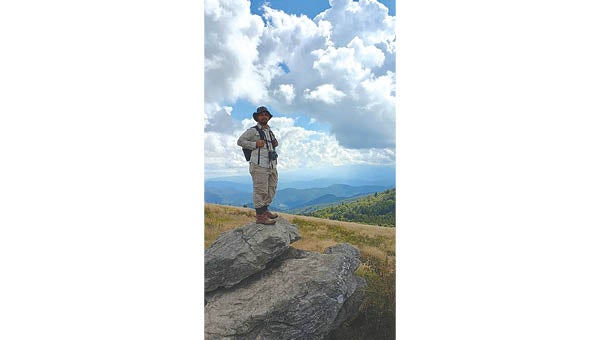From Central America to Gray Fossil Site, Belizean student wants to become paleontologist
Published 9:32 am Friday, April 12, 2024

- Photo Contributed/ETSU graduate student Alson Ovando aims to become the first Belizean paleontologist, a desire he has had since he was four years old and saw the movie "Jurassic Park."
|
Getting your Trinity Audio player ready...
|
While growing up in the coastal town of Dangriga, Belize, Alson Ovando knew he wanted to become a paleontologist by age 4, when he saw “Jurassic Park.”
Today, in spite of many challenges, he is on his way to doing just that as a graduate student pursuing a Master of Science degree in geosciences at East Tennessee State University. And as far as he and ETSU’s Dr. Blaine Schubert know, Ovando is the only Belizean to ever pursue paleontology as a career path and the only one to work in the field of vertebrate paleontology.
When the very young Ovando asked his mother, “Can I meet a paleontologist?”, she replied, “There are no paleontologists in Belize. The closest thing you could try to meet is an archaeologist.”
Before it became an independent country, Ovando said, Belize was known as British Honduras, and English geologists studied the land to determine what resources it might hold.
“What we know about the paleontology of Belize is very scattered pieces of information from people who have come to Belize to study archaeology and geology,” Ovando said.
While numerous outside scientists have looked at both invertebrate and vertebrate fossils on a small scale, Ovando said the country is largely untouched – and he plans to become the scientist who lays the groundwork for paleontological study in Belize for years to come.
None of the schools in Belize offer geology or paleontology programs, so he earned a bachelor’s degree in the closest available discipline to his field – natural resources management – from the University of Belize.
Ovando gained scientific experience as an intern and volunteered with protected areas throughout Belize. He helped with education and outreach, and his introduction to research came through an internship at the Belize Raptor Watch led by the Belize Bird Conservancy. This involved observing and counting raptors migrating from North America to South America. He learned about excavation and archaeological field methods while volunteering with the Stann Creek Regional Archaeology Project. He also earned protected areas management experience while working with the Belize Karst Habitat Conservation that co-manages Tapir Mountain Nature Reserve along with the government of Belize.
During this time, Ovando began looking at universities all over the world offering master’s degrees in paleontology. He had no luck connecting with professors interested in his intended niche of paleontology until he met noted archaeologist Dr. Jaime Awe at the Belize Archaeology Symposium. Awe connected him with Schubert, a professor in ETSU’s Department of Geosciences and executive director of the Don Sundquist Center of Excellence in Paleontology.
Ovando emailed Schubert and was pleasantly surprised.
“We met one time, and I told him about my life’s aspirations and dreams,” he said. “I barely let him talk because I was so happy to finally meet someone who was interested in Belize’s paleontology.”
Ovando spent most of 2023 getting ready to travel to the United States and ETSU. He said it’s been an adjustment to go to school and work at the same time, but he’s making it work, and in his free time, he enjoys birding and sightseeing around Tennessee.
Ovando believes it is important for students to take advantage of the opportunities available to them while they’re in school, whether those be for travel, internships or scholarships and grants. He took advantage of one such opportunity and became one of 12 recipients of a Small Grant in Support of Thesis or Dissertation awarded by the ETSU College of Graduate and Continuing Studies. This will assist him with research for his thesis on “Vertebrate Paleontology of Pleistocene Sites in Belize.”
As he works toward graduating with his master’s degree in 2025, Ovando is reaching out to schools that offer Ph.D. programs in paleontology. And after that, he plans to return home to fulfill his dream of establishing and promoting paleontology in Belize.
“You’ve been to the Gray Fossil Site – it’s incredible that people of all ages can visit this place to learn about the natural history of Tennessee,” he said. “There’s nowhere like that in Belize. Taking on this responsibility means that I’m not just doing the research, I’m also responsible for sharing paleontology with Belize and the world!
“My research is important because we only know up to a few thousand years of Belize’s historic ecology. But what we’re finding is that the ecosystems of Belize are hundreds of thousands of years old, and this is the first time the world will be learning about what life was like in Belize during the Pleistocene. It’s going to be a whole world of new knowledge and opportunities I need to share with my country, and that’s what I want for my life’s career.”




